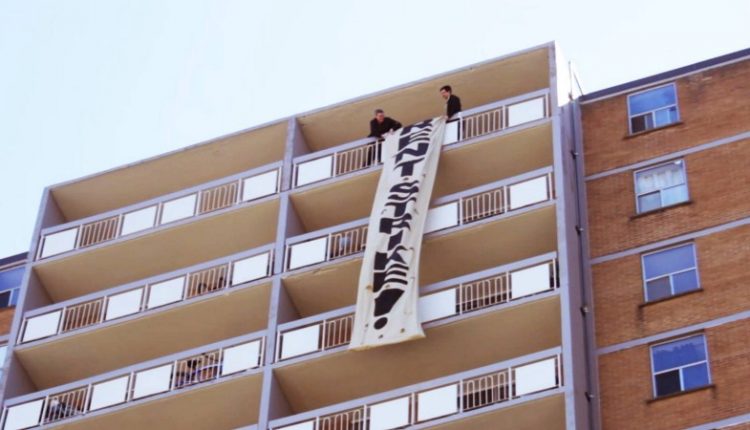
Tenants in Hamilton challenge the international capitalist class
On May 1st, International Workers Day, tenants in an apartment complex in Hamilton, Ontario, started a rent strike to protest proposed rent hikes and long overdue building repairs.
The complex, Stoney Creek Towers, is home to a mix of low-income, working class, and immigrant households, many of whom are living on disability or income assistance. Currently over 70 households within the 600-unit complex are striking, but organizers suspect that others will join in on June 1st, and are optimistic that the striking tenants will win their demands: long overdue building repairs and the withdrawal of their landlord, InterRent’s, application for an Above Guideline Increase (AGI) of rent to nearly 10% over two years.
AGIs are a loophole that allow landlords to increase rents above the legally allowed guideline, as long as they have carried out “maintenance and repairs.” In the case of Stoney Creek, InterRent purchased the towers a few years ago and has been neglecting interior repairs while making minor cosmetic changes to the exterior of the towers in order to push out older tenants so that they can drastically increase rent and make more profit. Only empty units have been renovated, and only in order to charge higher rents.
InterRent is a real estate investment trust (REIT). REITs pool money in order to invest in real estate—they’re like mutual funds, except investors purchase into a portfolio of properties, rather than stocks. While REITs traditionally tended to stick to commercial real estate, they are increasingly investing in residential properties. According to its website, InterRent focuses on purchasing “medium-sized, multi-family residential properties in Ontario’s mid-sized population markets, targeting working and middle class, long term renters.” In other words, they’re primarily interested in affordable, working class neighborhoods located in areas experiencing gentrification spill-over from larger cities.

InterRent’s exploitative practices mimic the behavior of landlords across the country. Prior to the rent strike, InterRent had already been offering buyouts to people to leave, including tenants who had moved in within the last year. Because an empty unit releases landlords from rent increase limitations, people leaving or getting kicked out of their homes results in greater profit to landlords who know they can get up to twice the rent with a new tenant. Hearing about this, I was reminded of the renoviction of a low-income apartment building in Maple Ridge, BC. After pulling together a news conference and filing complaints with the Residential Tenancy Board about the landlord’s permit-less renovictions, many tenants were bribed to leave quietly and had no other option but to take the money.
Before starting the rent strike, Stoney Creek tenants first filed complaints with Ontario’s Landlord Tenant Board (LTB) to protest InterRent’s AGI application. As in BC, the LTB in Ontario attempts to mediate all complaints first so as to avoid paying for hearings. Emily, from the Hamilton Tenants Solidarity Network (HTSN), explained to me that for many Stoney Creek tenants, seeing how inadequate the LTB was in supporting their rights and how alienating the process of submitting a complaint to them was, made it clear why a rent strike was needed. Some tenants had an intuitive sense that the landlord-tenant relationship is inherently unjust, while others initially started out with more faith in the LTB process.
The LTB in Ontario, and the RTB in BC, mandate to protect both landlord and tenant rights, despite the reality that the landlord-tenant relationship is fundamentally unjust. That municipal and provincial governments are often unable to offer even the minimum protection to renters under their own laws speaks less to the inadequacy of legislation and more to the ways in which colonial and capitalist private property relations inherently award landlords power over their tenants. Only by organizing mass tenant pushback can we hope to threaten this power imbalance. In the case of the Stoney Creek rent strike, tenants are directly withholding profits from InterRent’s unitholders, who receive portions of InterRent’s rental income.
Their battle shows us that Canadian firms are no less rapacious than foreign firms, and that the core of the landlord-tenant relationship is the commodification of land, land that is of course Indigenous land. InterRent may extract rent from tenants at a larger scale than an individual landlord, but both their interests are produced by colonial and capitalist private property relations. In other words, we should resist characterizing corporate landlords as somehow fundamentally different than individual landlords: while individual landlords may behave in more “humane” ways, for example, by increasing rents to a lesser degree, this facade does not affect the objective power relations between landlords of all forms and tenants. This power emerges from private property, rather than the will of any given landlord.
